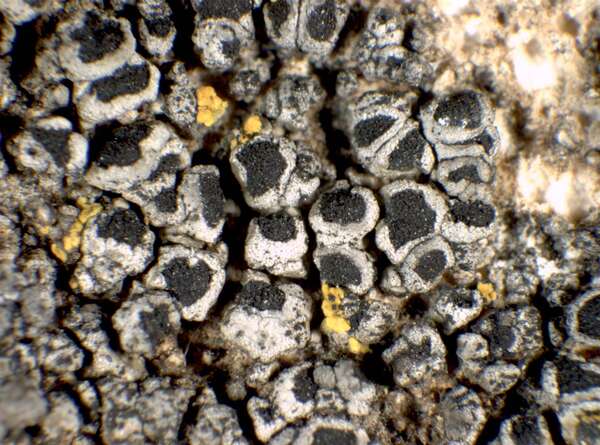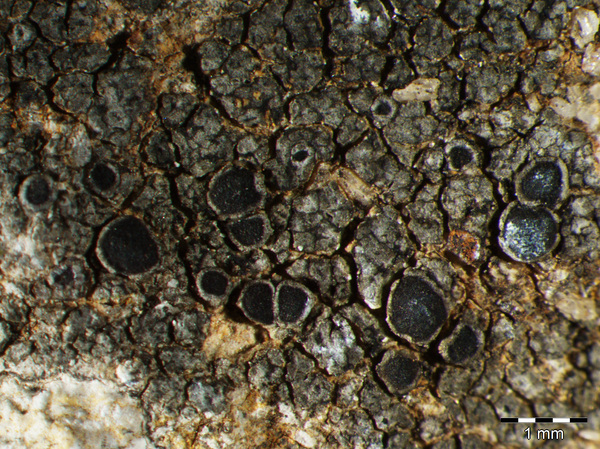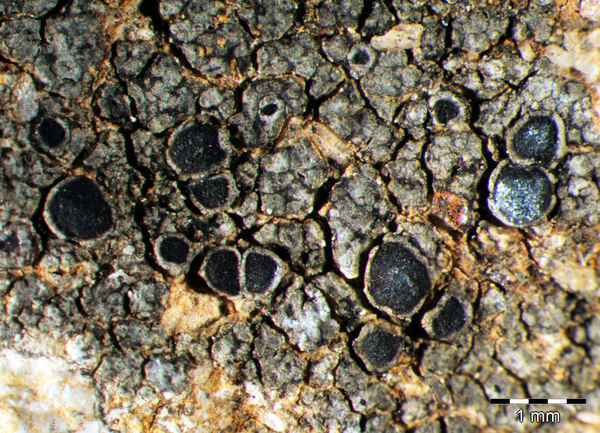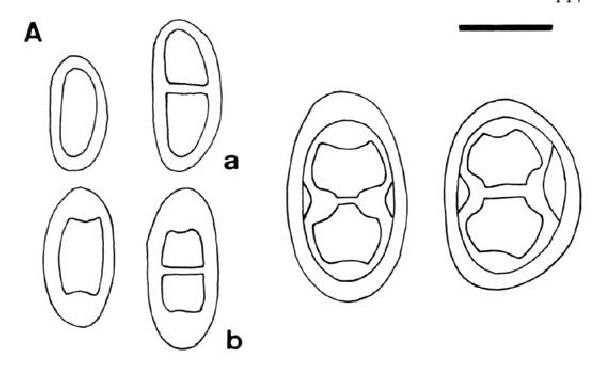Rinodina calcarea (Arnold) Arnold
Verh. zool.-bot. Ges. Wien, 29: 362, 1879. Basionym: Rinodina caesiella var. calcarea Arnold - Flora, 43: 69, 1860.
Synonyms: Lecanora confragosa var. glebulosa Harm.; Rinodina calcarea var. ampsagana (Stizenb.) Zahlbr.; Rinodina calcarea var. melanocarpa J. Steiner; Rinodina calcarea var. nummulitica Flagey; Rinodina confragosa var. glebulosa (Harm.) Zahlbr.
Distribution: N - VG (TSB 3156), Ven, TAA (Nascimbene & al. 2022), VA (Piervittori & Isocrono 1999), Emil, Lig (TSB 32484). C - Tosc, Abr (Nimis & Tretiach 1999), Mol (Garofalo & al. 1999, Caporale & al. 2008). S - Camp (Garofalo & al. 1999, Aprile & al. 2003b), Pugl (Nimis & Tretiach 1999, Garofalo & al. 1999), Bas (Nimis & Tretiach 1999), Si (Nimis & al. 1996b, Ottonello & Salone 1994).
Description: Thallus crustose, episubstratic, thick, continuous to rimose or areolate, whitish grey to pale brown, often with a pruinose appearance, the areoles smooth to granulose-verrucose, flat to convex. Apothecia lecanorine, 0,5-0.8(-1) mm across, adnate to sessile, with a dark brown to black, flat to weakly convex disc, and a thick, smooth to slightly warted, persistent thalline margin. Epithecium reddish brown, 10-20 µm high, K-; hymenium colourless, 90-120(-130) μm high, not inspersed with oil droplets; paraphyses 1.5-2.5 µm thick at mid-level, the apical cells swollen, 4-7 µm wide, with a dark cap; hypothecium colourless, without oil droplets, up to 200 µm high. Asci 8-spored, clavate, the K/I+ blue tholus penetrated by a faintly amyloid apical cushion with parallel or diverging flanks, the wall K/I-, surrounded by a K/I+ blue outer layer, Lecanora-type. Ascospores 1-septate, brown, ellipsoid, (16-)20-26 x 10-16 μm, Tunicata-type i.e. with a thick outer wall, and lumina thus appearing double-walled, the torus absent, with ontogeny intermediate between types A and B. Photobiont chlorococcoid. Spot tests: K-, C-, KC-, P-, UV-. Chemistry: without lichen substances.Note: a southern species found on the top of sun-exposed boulders of dolomite, limestone and calcareous schists, with a rather wide altitudinal range.
Growth form: Crustose
Substrata: rocks
Photobiont: green algae other than Trentepohlia
Reproductive strategy: mainly sexual
Commonnes-rarity: (info)
Alpine belt: absent
Subalpine belt: rare
Oromediterranean belt: absent
Montane belt: rather rare
Submediterranean belt: rather common
Padanian area: absent
Humid submediterranean belt: rather common
Humid mediterranean belt: rare
Dry mediterranean belt: very rare
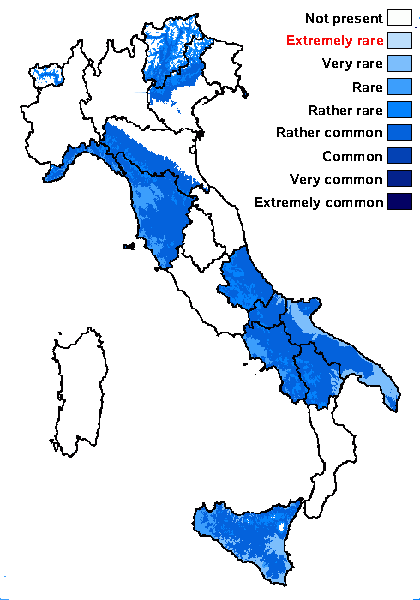
Predictive model
Herbarium samples
Growth form: Crustose
Substrata: rocks
Photobiont: green algae other than Trentepohlia
Reproductive strategy: mainly sexual
Commonnes-rarity: (info)
Alpine belt: absent
Subalpine belt: rare
Oromediterranean belt: absent
Montane belt: rather rare
Submediterranean belt: rather common
Padanian area: absent
Humid submediterranean belt: rather common
Humid mediterranean belt: rare
Dry mediterranean belt: very rare

Predictive model
| Herbarium samples |
 Index Fungorum
Index Fungorum
 GBIF
GBIF
